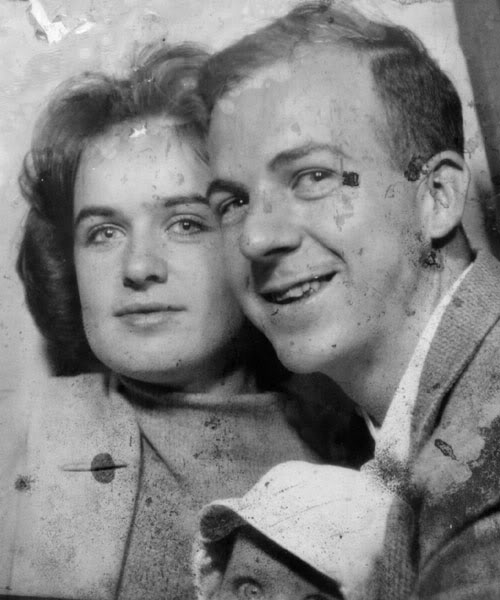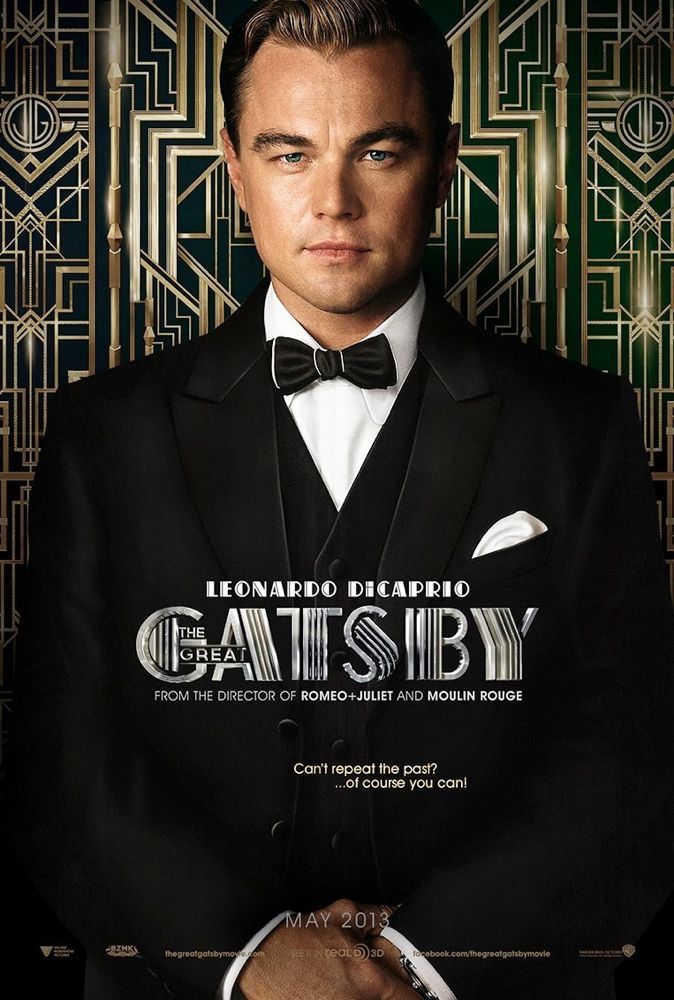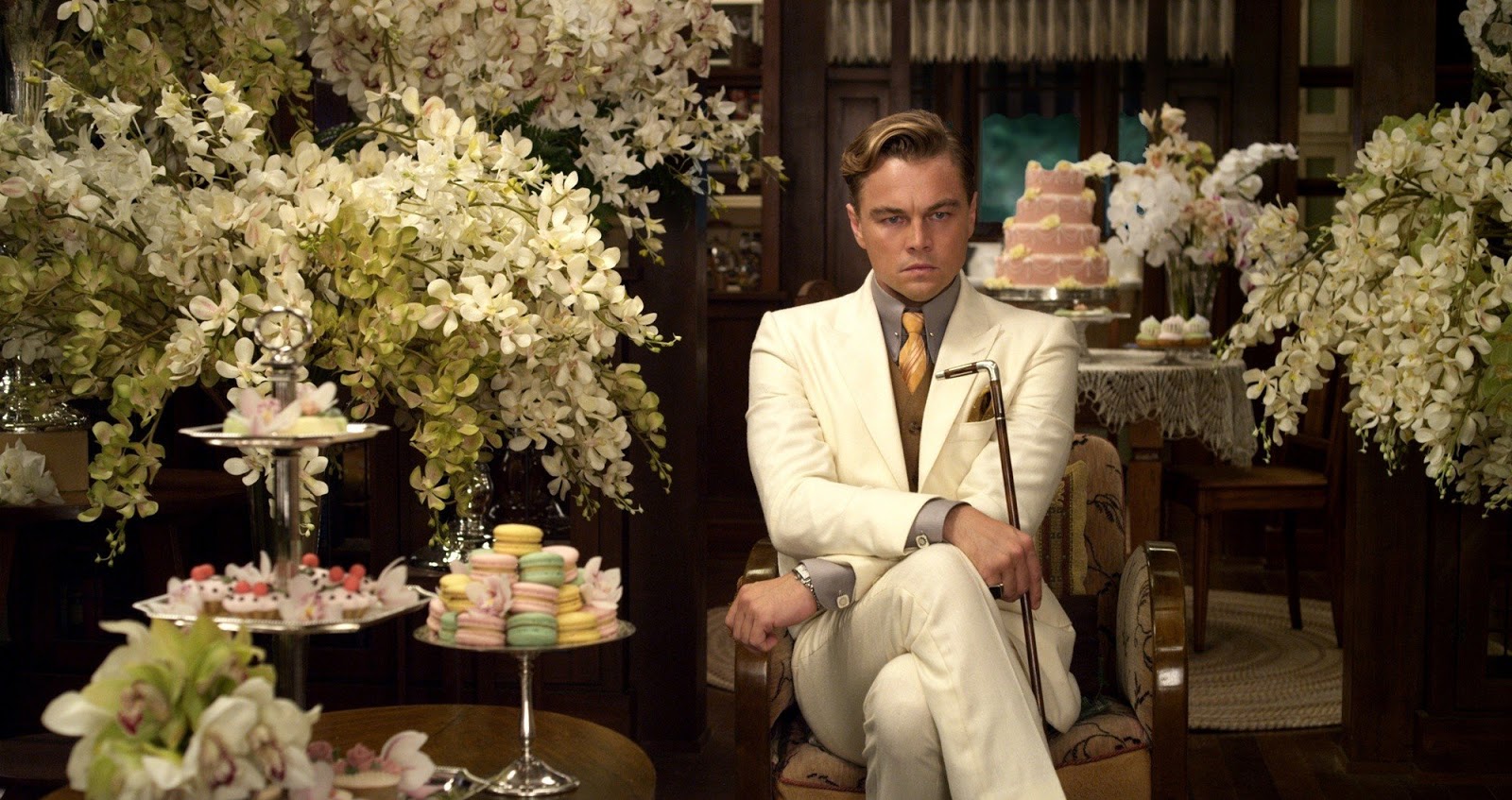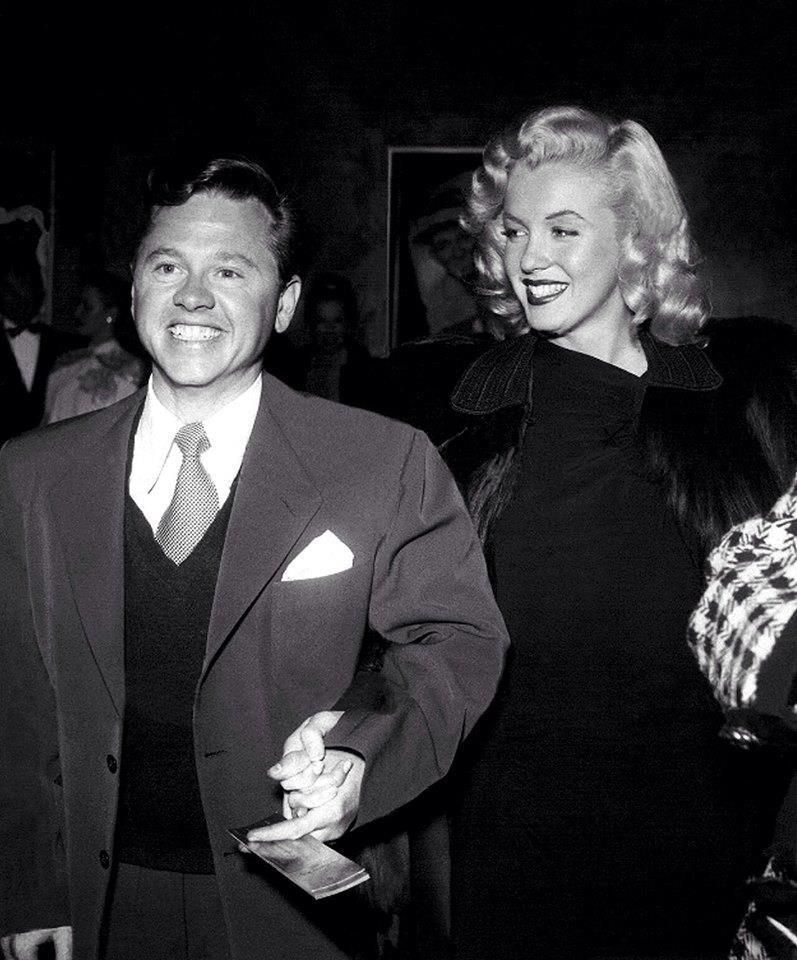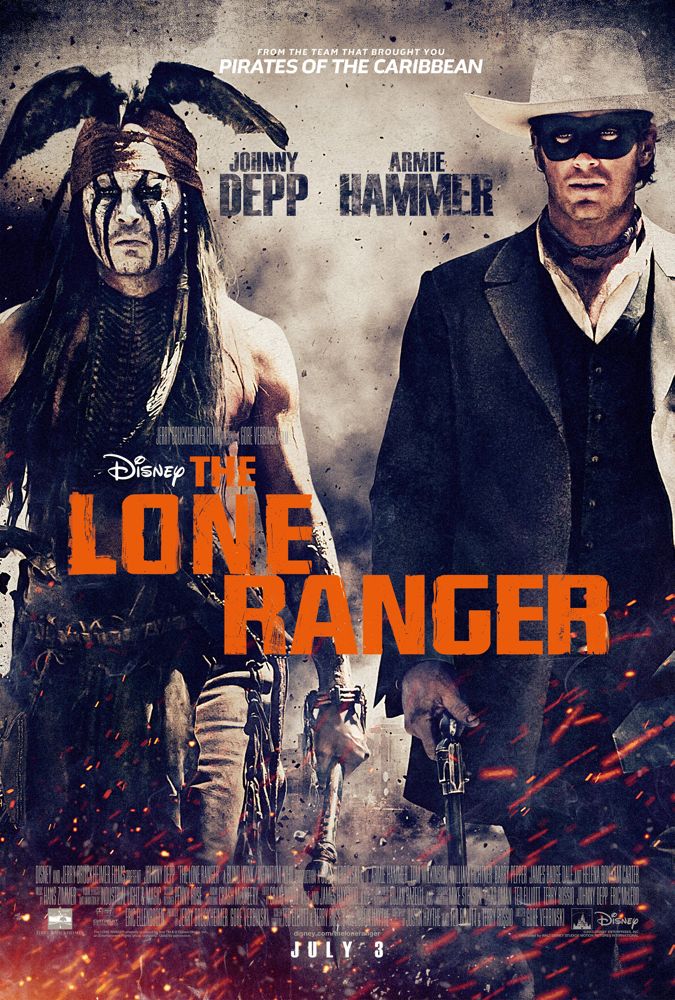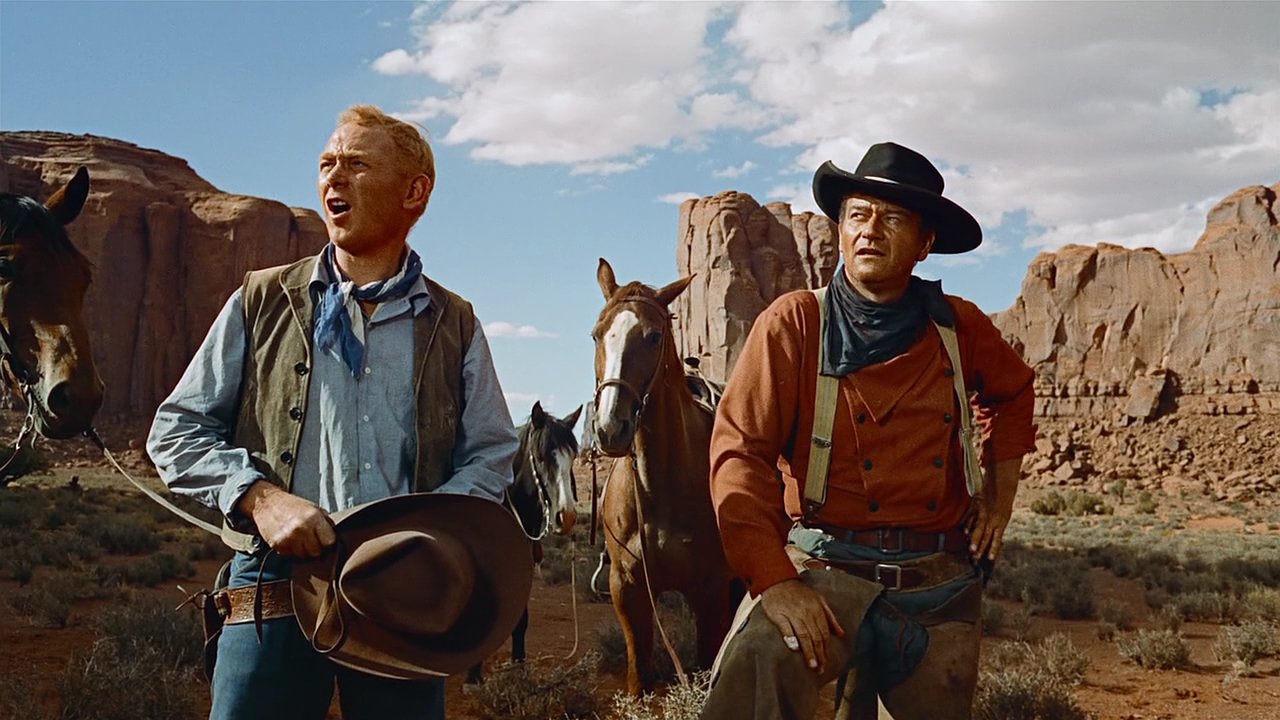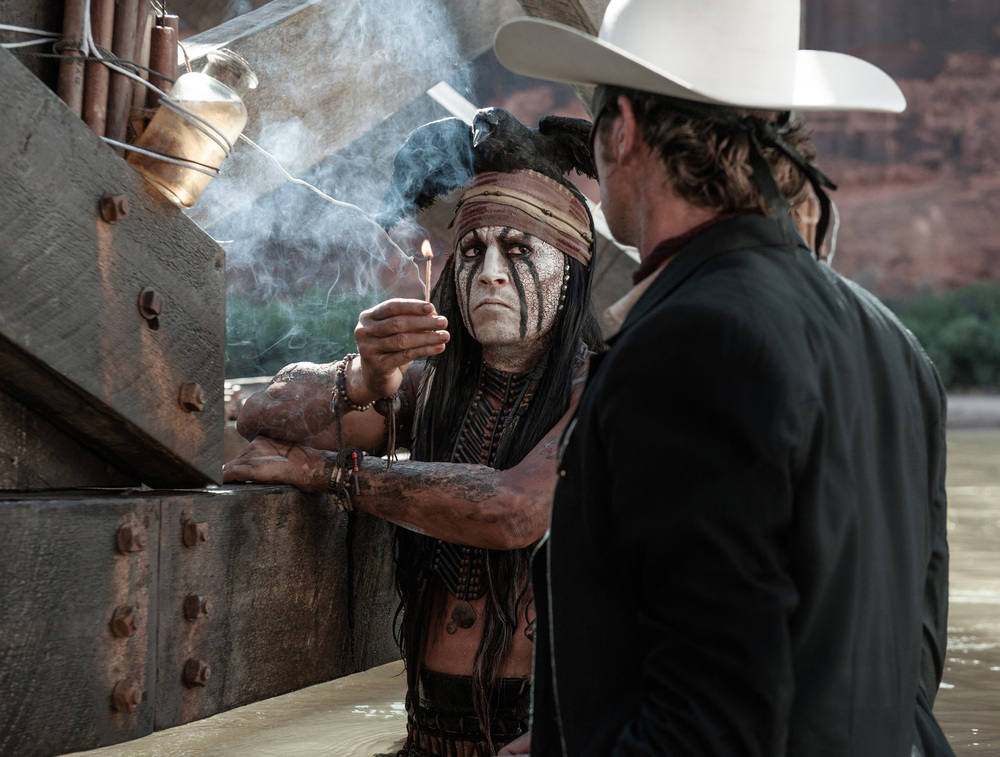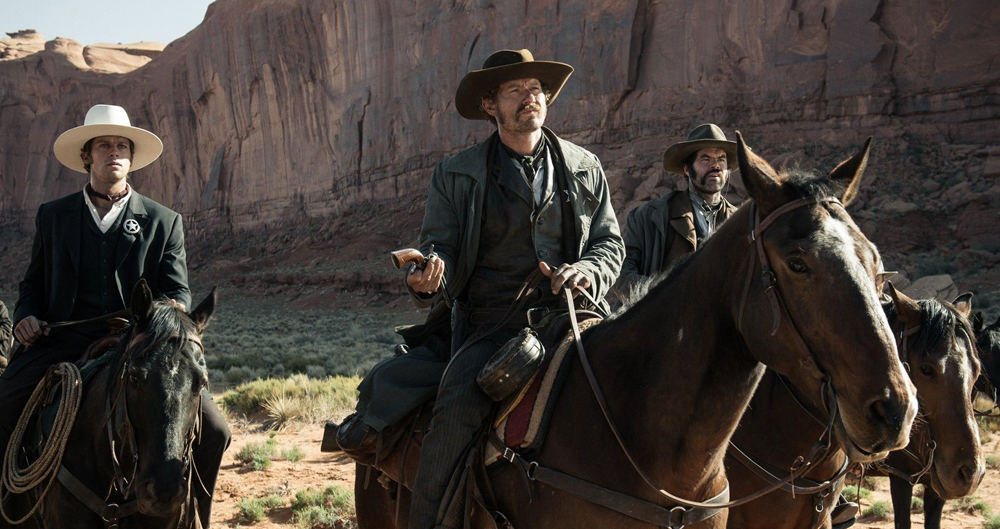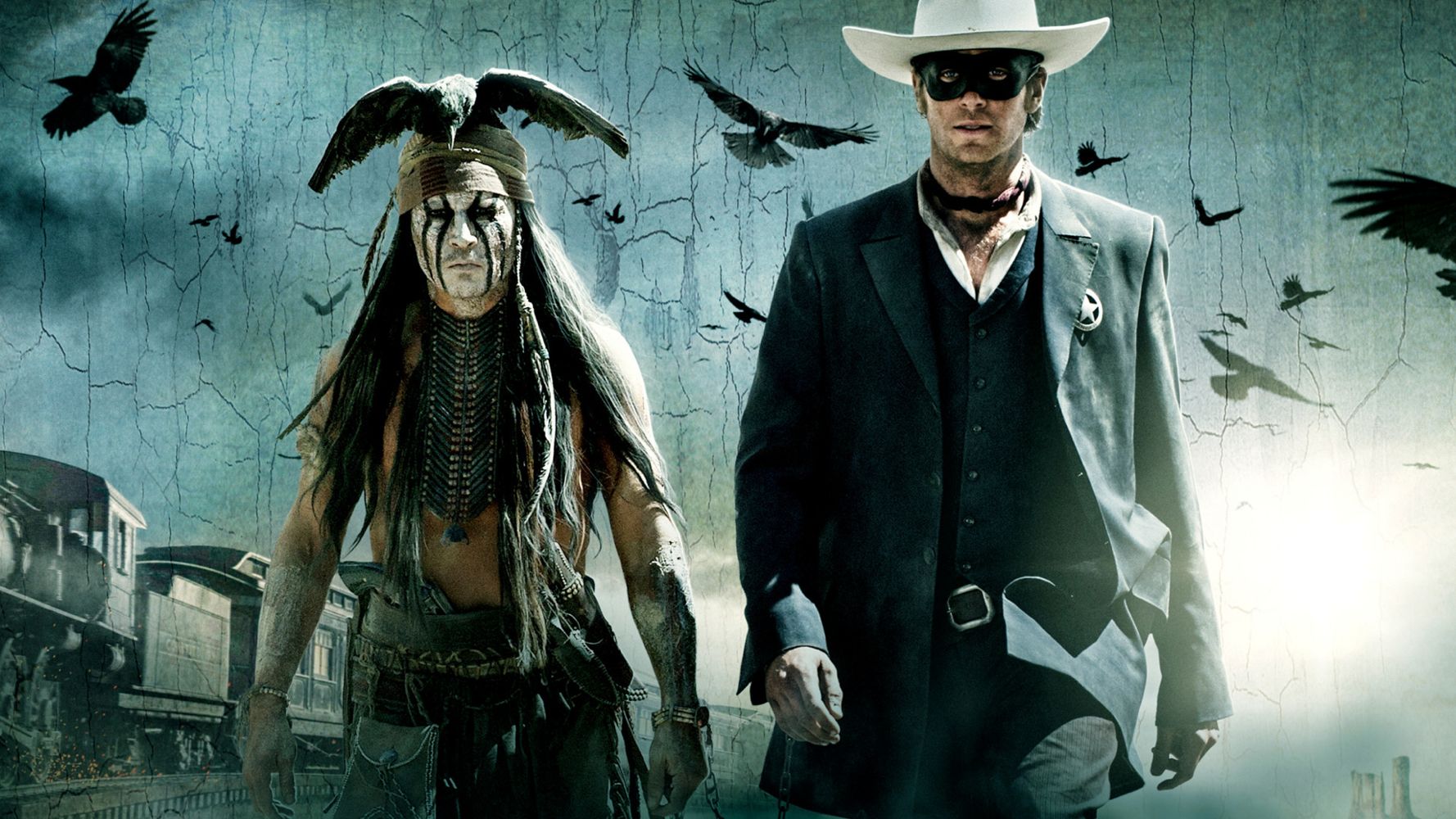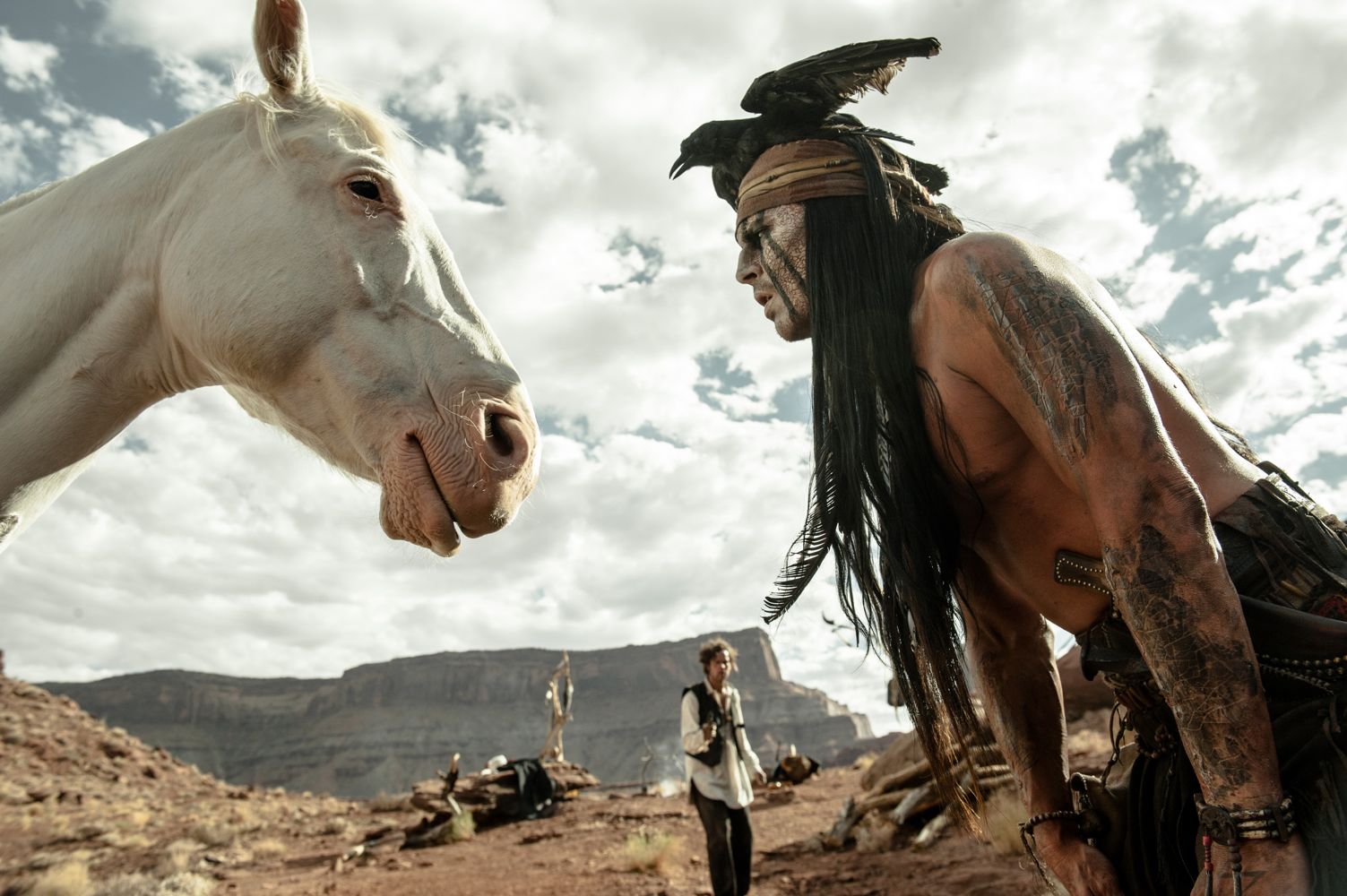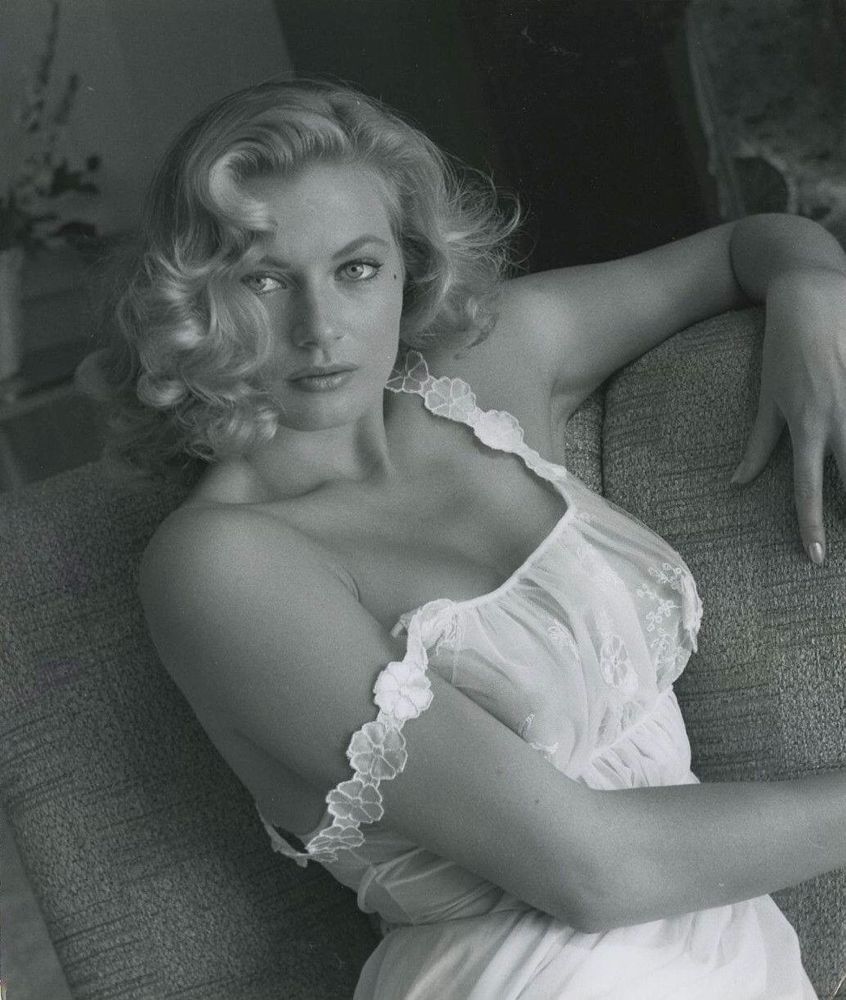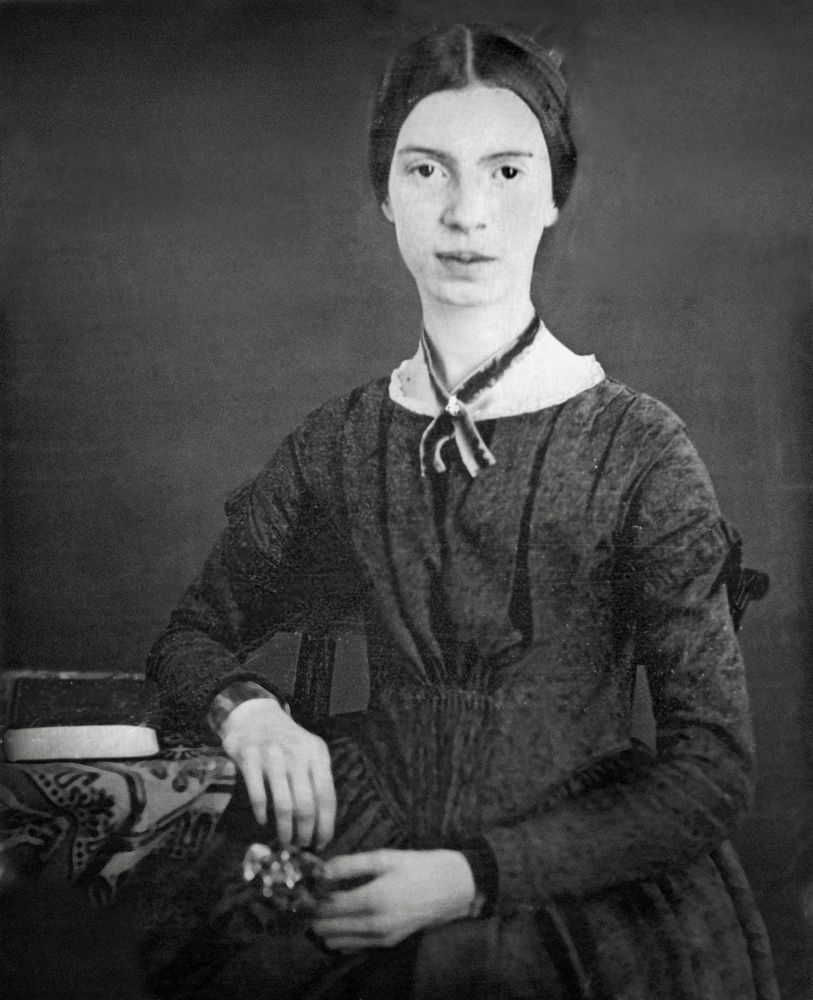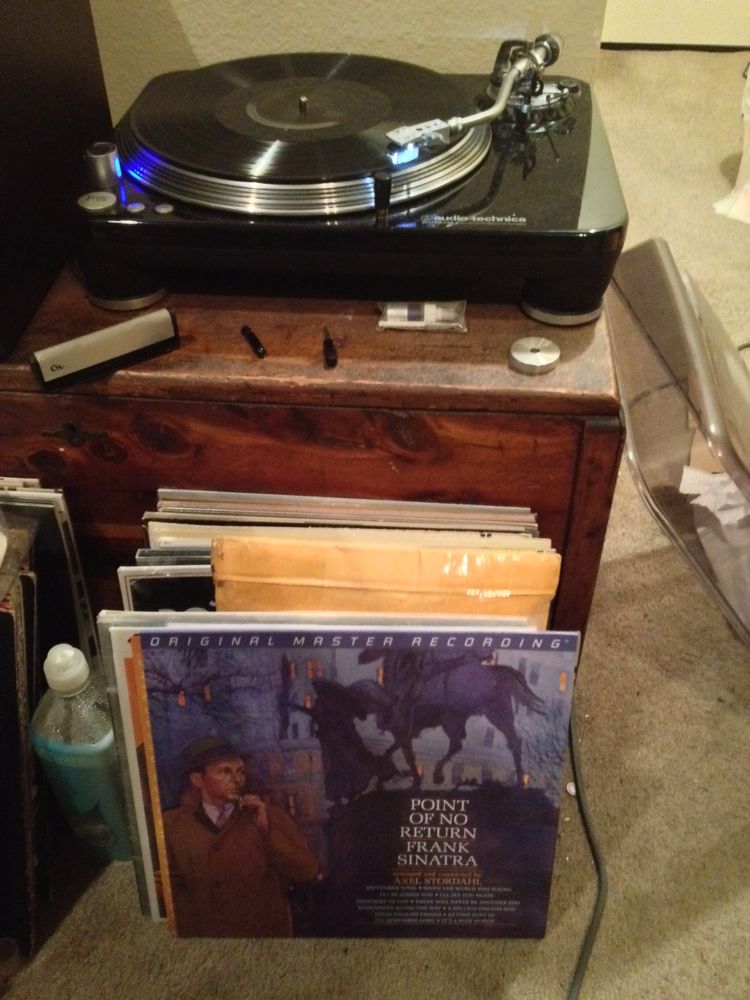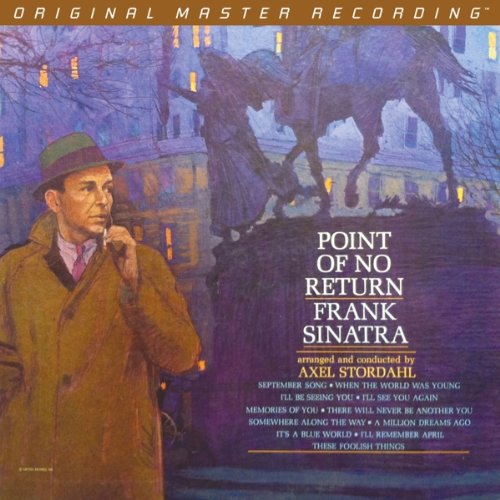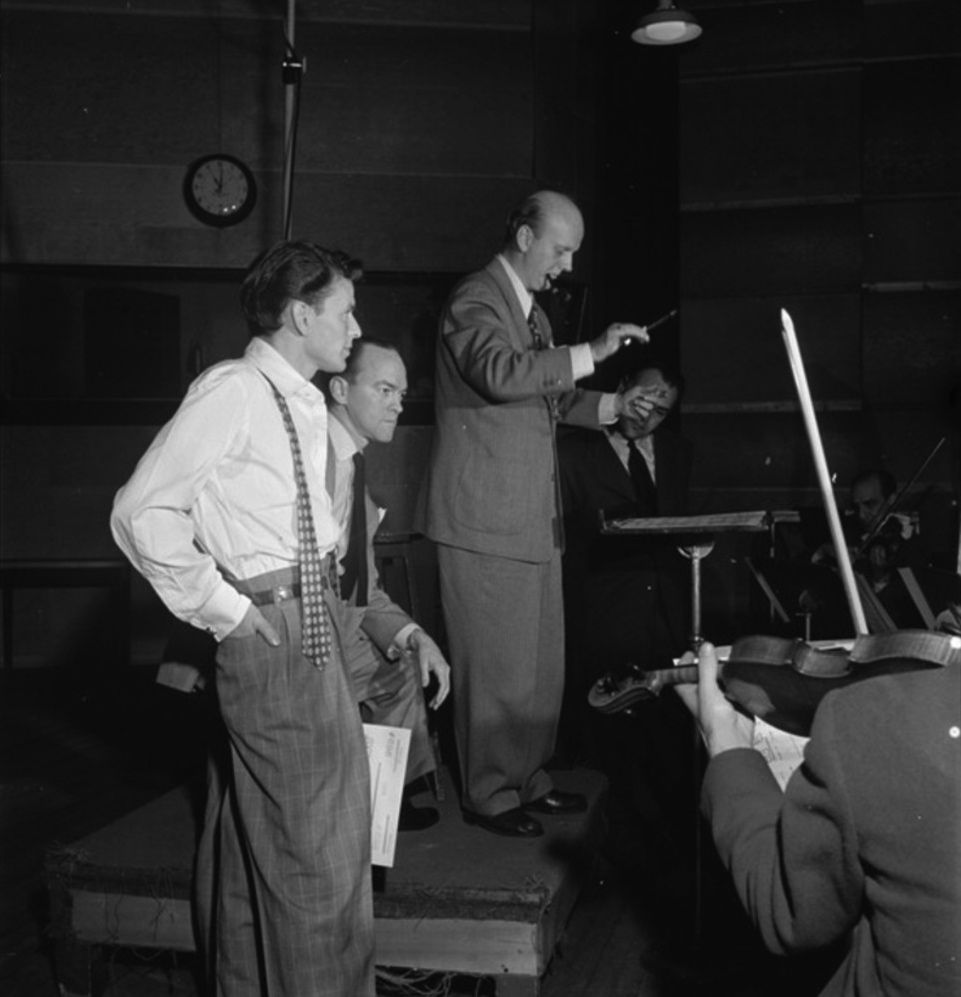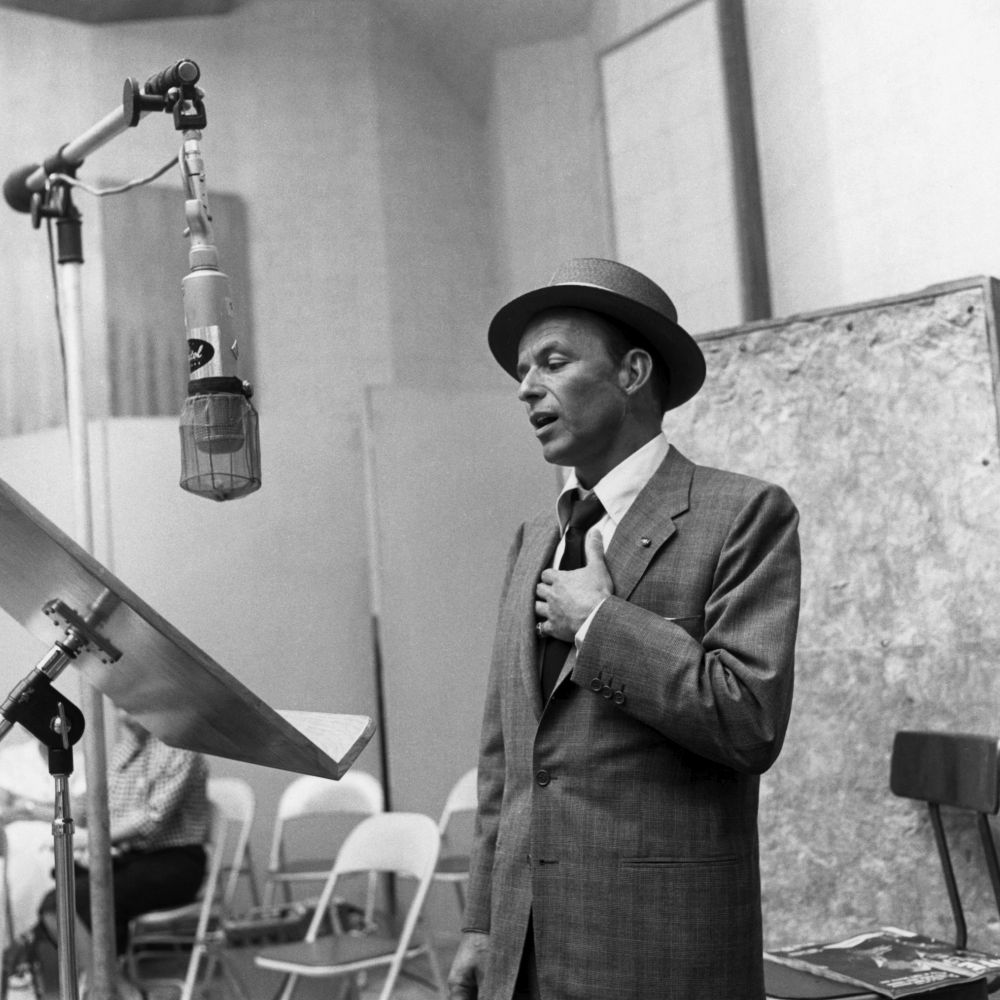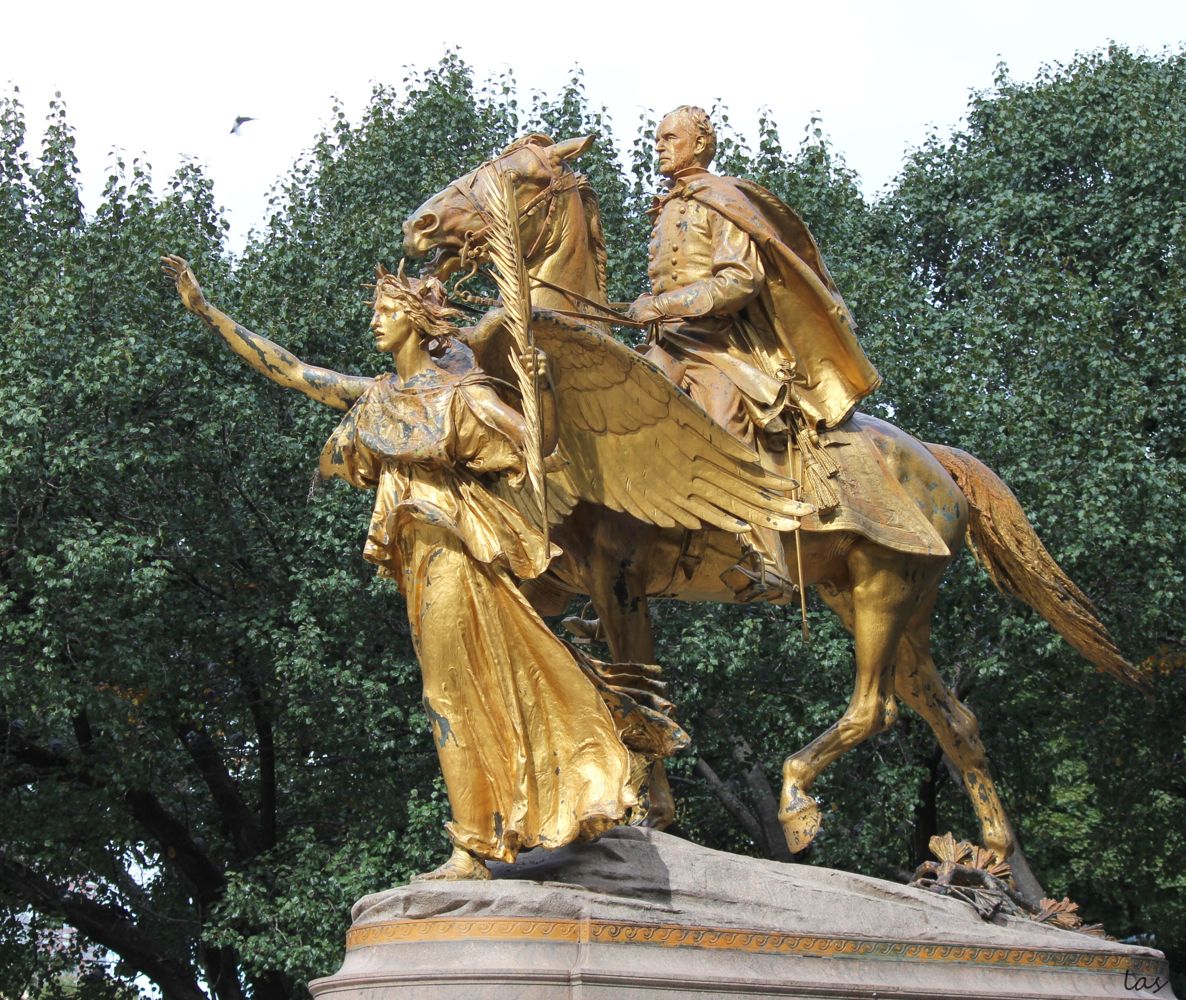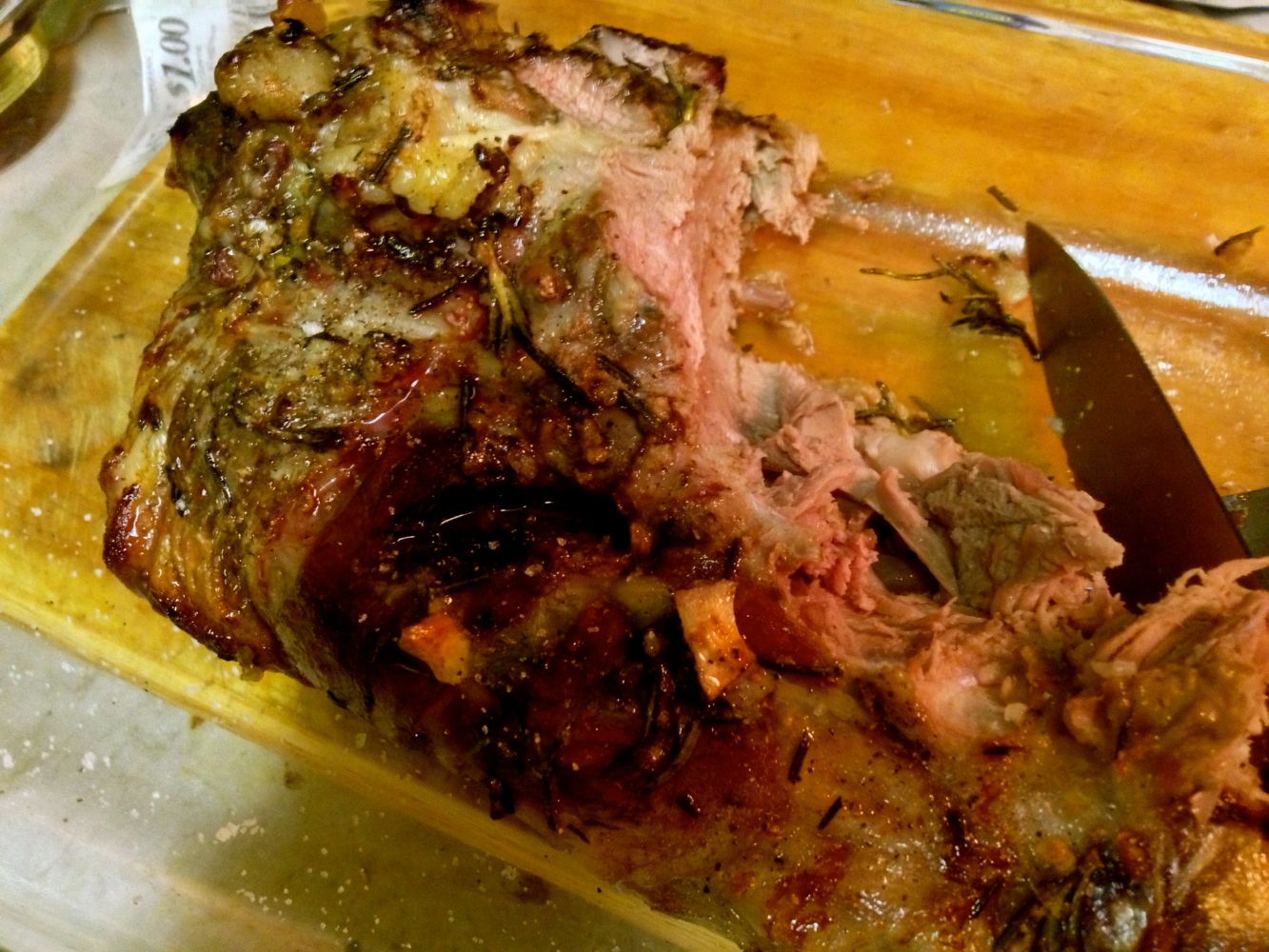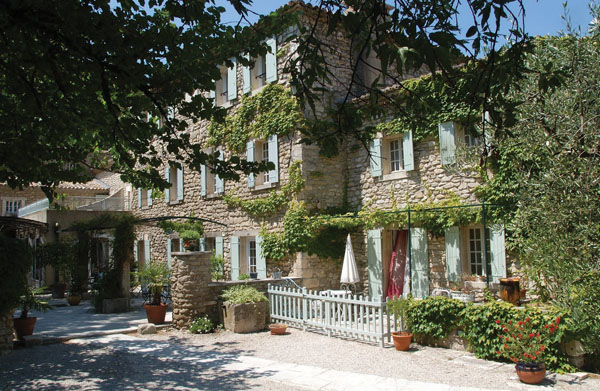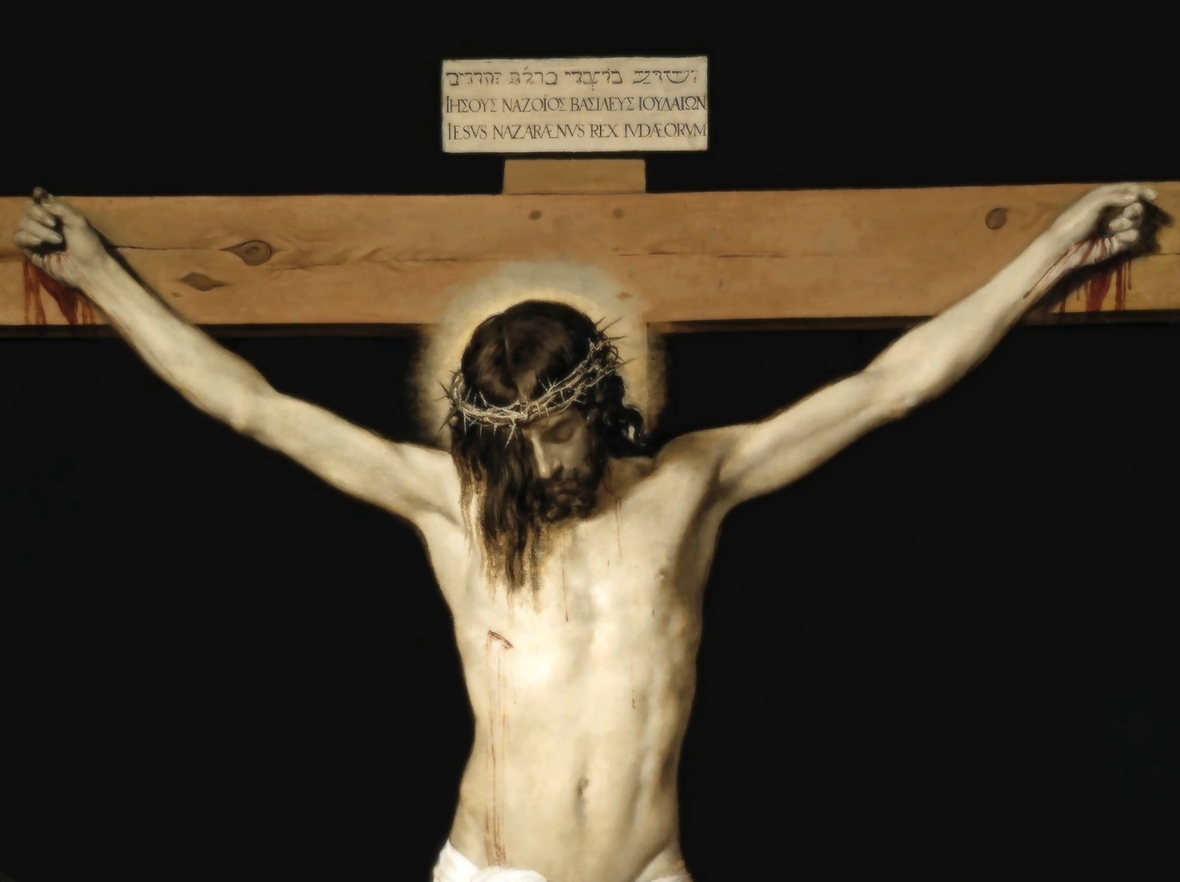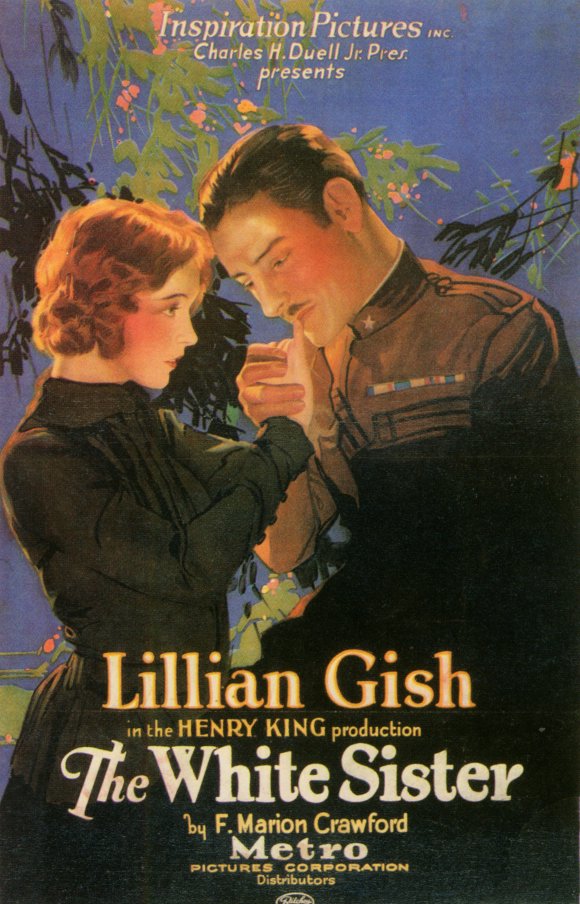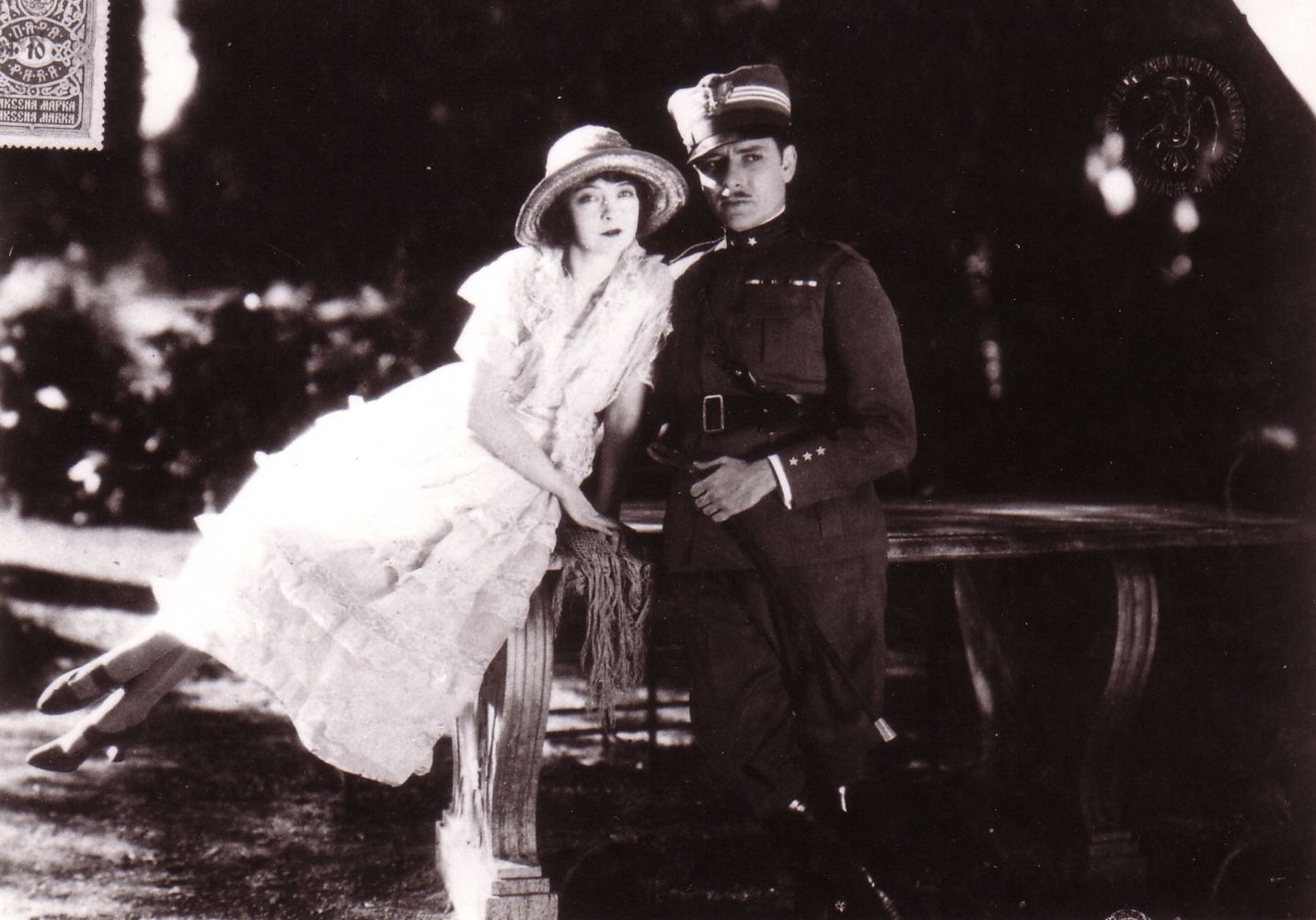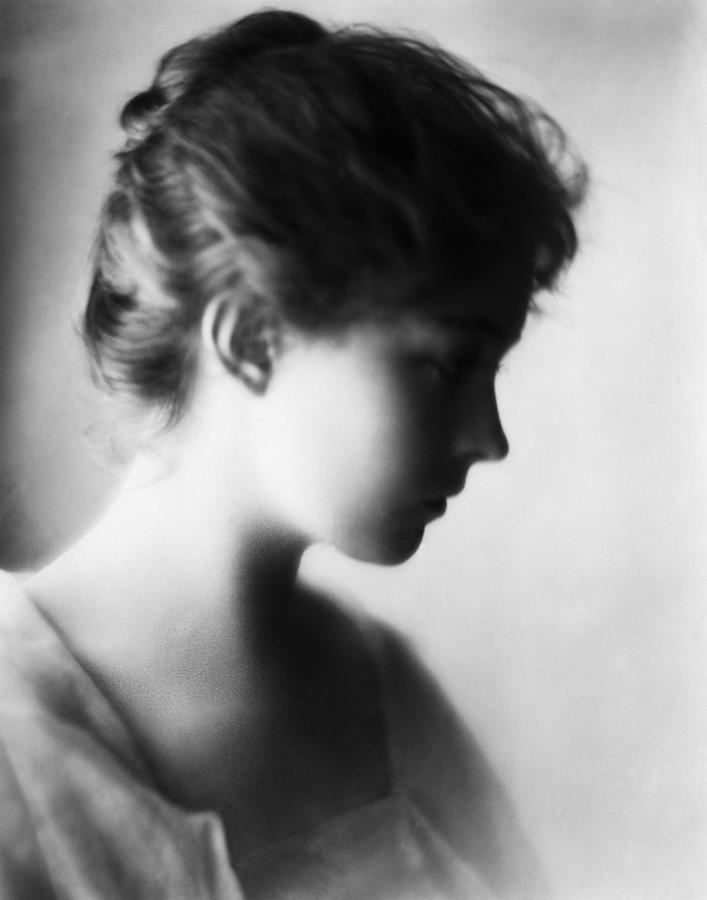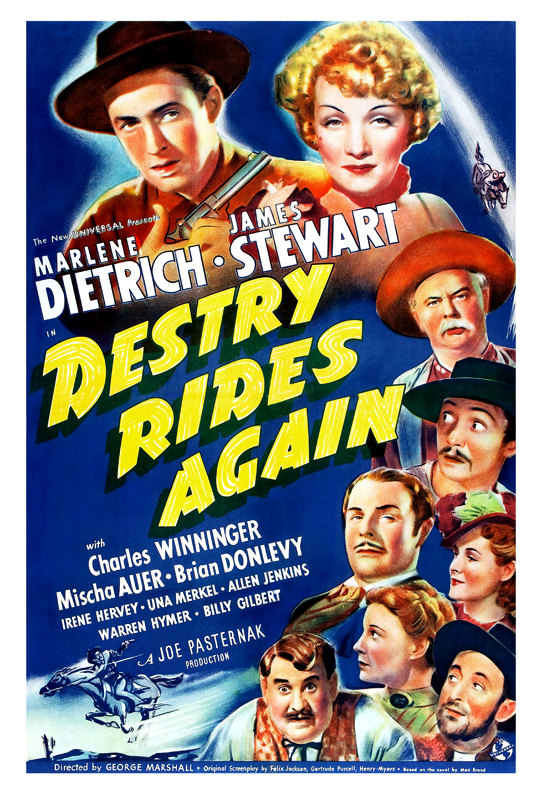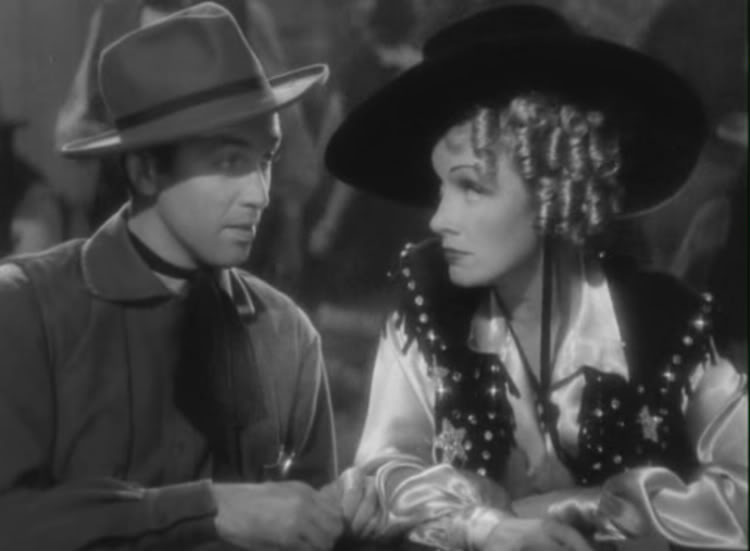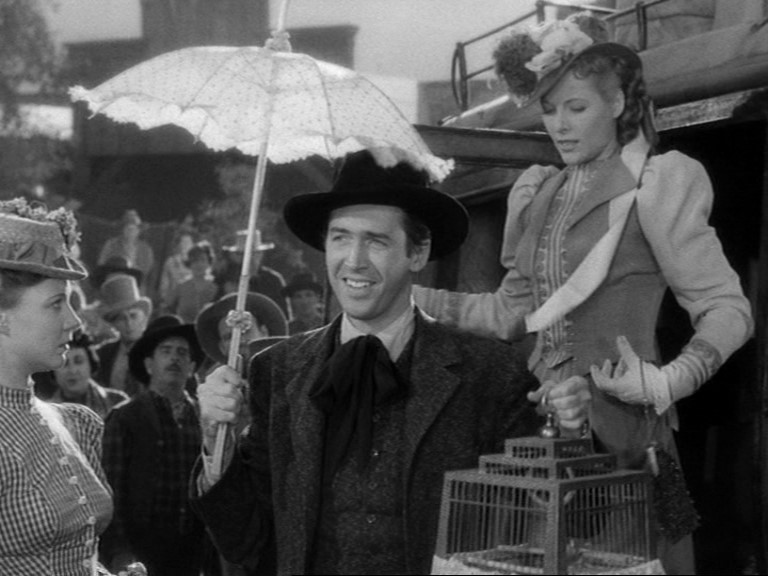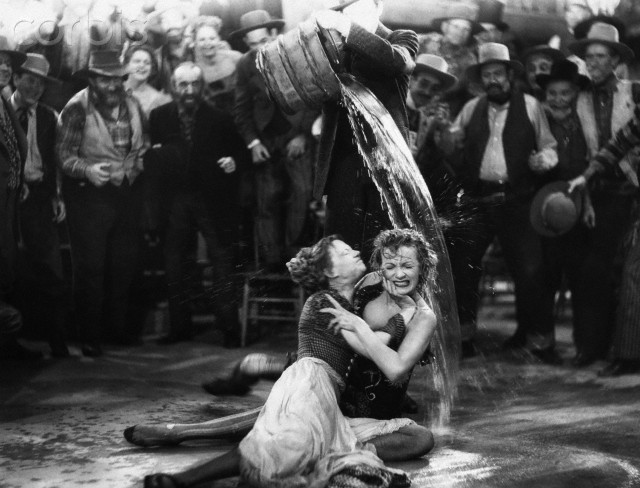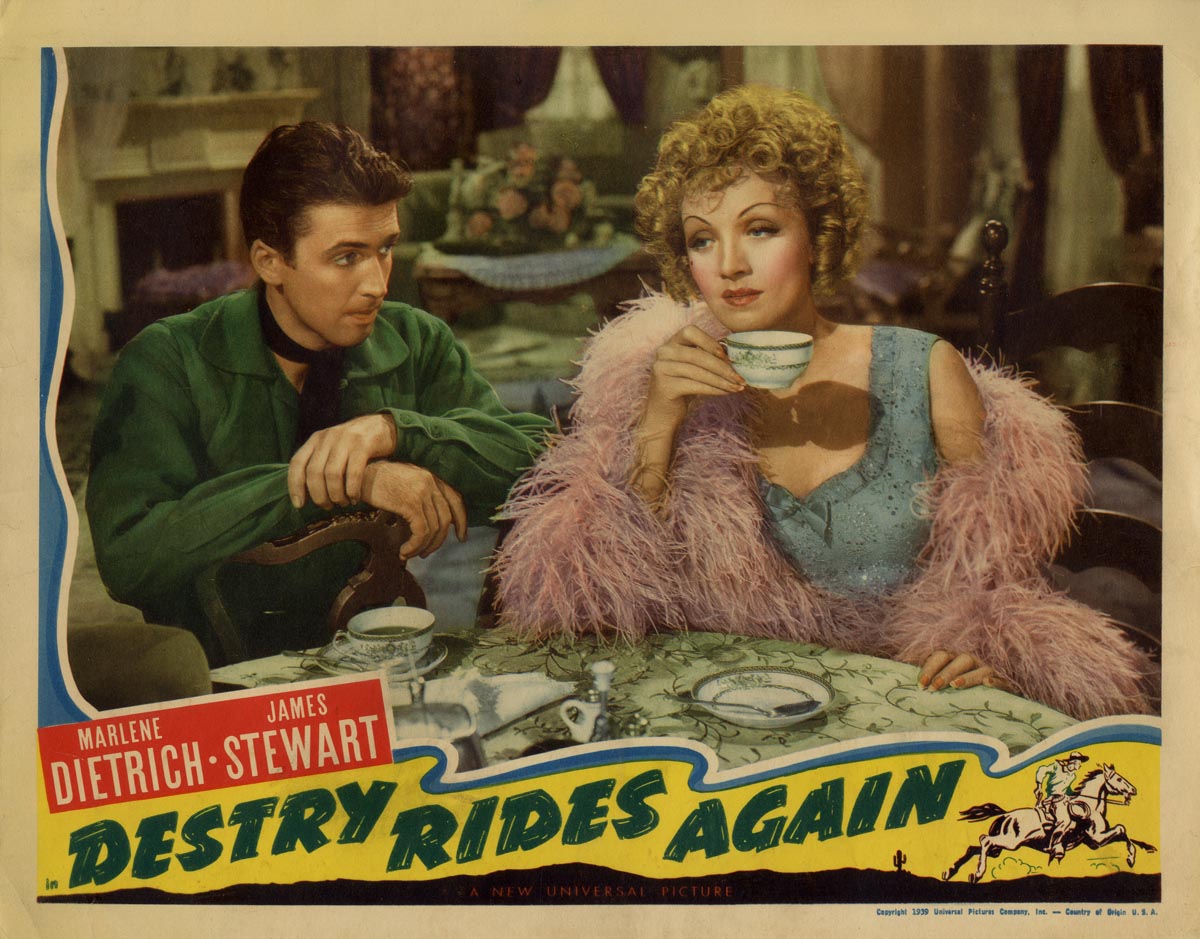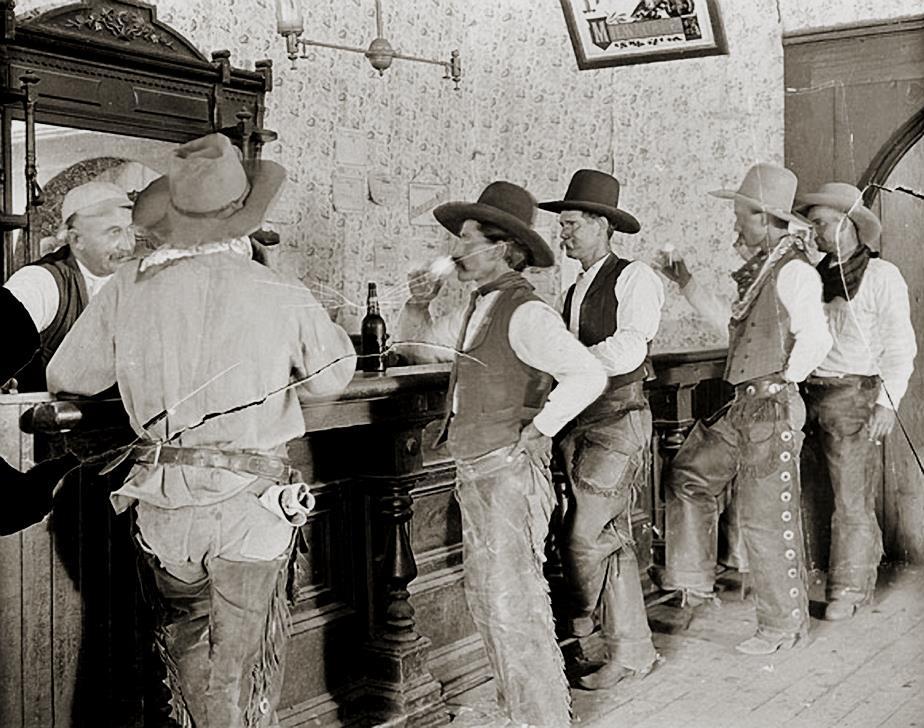SHORT TAKE: THE GREAT GATSBY (2013)
This is a Looney Tunes version of Fitzgerald’s novel, but it’s a pretty good Looney Tunes version of Fitzgerald’s novel, at least if you watch it in 3D — which is to say that it’s visually amusing and inventive, and possesses a delirious sort of momentum from shot to shot.
Baz Luhrmann has always aspired to the delirious visual style of a cartoon but his efforts have always fallen short to me — consisting mostly of lurid production design and hysterical, all-but-incoherent editing. 3D has gotten him to concentrate on making interesting, or at least diverting shots, playing with the possibilities of the format in a exuberant way.
It’s long for a Looney Tune, of course, but the acting is good enough and the story is good enough to keep your interest as you watch Luhrmann fiddle around happily with his new toy. I imagine it would be deadly dull in 2D — you’d probably have to force yourself to sit through what is, aside from the visuals, an over-long and fairly pedestrian adaptation of a classic.
Click on the images to enlarge.
THE GHOSTS WE LIVE WITH
THE LONE RANGER (2013)
Best described by one reviewer as “a film without a constituency”, The Lone Ranger works overtime to alienate any constituency it might have had in theory. Within the first fifteen minutes we are shown The Lone Ranger and Tonto robbing a bank, and the man behind The Lone Ranger’s mask is established as irreligious. Ha, ha! The filmmakers want us to know right off that this is not going to be “your grandpa’s type of Western” — which is, of course, the only kind of Western anybody wants to see.
We still long for the moral values, for the heroic role models, that Westerns once supplied, and whenever a modern Western mocks those things, it flops at the box office — just as The Lone Ranger flopped. (The film lost approximately $150 million dollars overall for Walt Disney Pictures.)
You can make a funny Western, a Western that pokes fun at Western clichés, without being cynical about the tradition, but being cynical about the tradition is the mark of hipness for a modern Western. The only people who find this sort of cynicism amusing are the Hollywood hipsters who make such films.
There are some funny things in the film. There are some beautiful shots that reference classic Westerns like The Searchers. There are some thrilling action sequences — or action sequences that would be thrilling if they didn’t rely so obviously on CGI. Directors with big budgets just never know where to stop with the CGI stuff — it’s like a drug. Watching a man sit a horse well as he rides through beautiful country is always exciting, cinematically. Watching a man sit a horse indifferently as he rides in front of a green screen is just not the same.
The people who made this movie made the delightful Pirates Of the Caribbean, which is also a goof on an old movie genre. The Lone Ranger must have seemed like a cinch follow-up, goofing on a different old movie genre. But people care about Westerns in a way they don’t care about pirate movies. It was a fatal miscalculation not to understand this.
Those who want to brave a viewing of The Lone Ranger should know that it’s one of those movies that gets worse and worse the longer it goes on, and it goes on for two and half hours — time enough to get really, really bad, swirling deeper and deeper into incoherence and silliness, all at a breakneck pace.
Click on the images to enlarge.
AND GOD CREATED WOMAN
BELLE KNOX TO STAR IN EMILY DICKINSON BIOPIC
Lars von Trier has signed Duke University porn star Belle Knox to star in his upcoming film based on the life of 19th-Century poet Emily Dickinson.
Knox will portray the reclusive spinster in a film without nudity or sex of any kind. “I want to make a prim film, a repressed film,” says von Trier. “I want to explore the mind of a quiet genius.”
The film, whose working title is Lap the Miles, will explore “the intersection of yearning and reticence” says the director. He thought of Knox because her first name reminded him of a one-woman play about Dickinson called The Belle Of Amherst. “I watched many pornos of Belle Knox and saw in her an inwardness, an intelligence, which I knew would be right for the character of my dear Emily.”
The film, to be produced by Marie Cecilie Gade and Louise Vesth, who also produced Von Trier’s Nymphomaniac, will be shot in Denmark.
Knox, who says she’s very excited and challenged by the idea of working in a serious dramatic film, was not familiar with Dickinson’s poetry until contacted by von Trier. “Then I read some of it and realized it was amazing. Quirky and funny and brilliant. I knew immediately I could relate to this woman and feel honored that I can help bring her story to a modern-day audience.”
WHAT I’M SPINNING NOW
This album, from 1962, was the last one Frank Sinatra made for Capitol Records. He had already announced his plan to leave the label in order to start his own, Reprise Records, and had begun recording tracks for release on Reprise, but he still owed Capitol one last LP under his old contract, and this is the LP he delivered, recorded in just two days.
Its reputation has suffered from being considered a perfunctory effort by Sinatra done for contractual reasons only. It was left out of Mobile Fidelity’s legendary audiophile vinyl collection of Sinatra’s Capitol albums (above), and it’s relatively hard to find as a used LP, except in an abridged version issued later by Capitol as a low-budget title.
Mobile Fidelity has just rectified its questionable decision to leave it out of its Sinatra box by issuing a fine 180-gram vinyl pressing of the complete album. It’s not one of Sinatra’s greatest Capitol LPs, but it’s hardly a negligible effort, either.
Interestingly, Sinatra got Alex Stordahl (with Sinatra above in 1947) to arrange the numbers on Point Of No Return. Stordahl, known for his swirling, sentimental (some might say syrupy) sound, had been Sinatra’s principal arranger during his years with Columbia. The Stordahl sound worked well with Sinatra’s voice in his boy crooner phase, and Stordahl arranged Sinatra’s first sessions when he moved to Capitol, but Sinatra was reinventing his artistic persona at that point and quickly moved on to other arrangers who had a hipper, jazzier vibe — Billy May, Gordon Jenkins and, most notably, Nelson Riddle.
So it was undoubtedly something of a sentimental gesture by Sinatra to bring Stordahl back for his last recordings at Capitol, ending up where he had started off, so to speak, completing a circle.
The album he and Stordahl created, however quickly, is quite fine. Neither is going for big effects here, for anything profoundly expressive, but the craft of both men was such that they simply couldn’t just toss something off heedlessly. These are good, solid interpretations of good, solid songs, inflected with Sinatra’s musical and emotional genius. It’s by no means unworthy of the great body of work Sinatra created at Capitol, which remains one of the glories of our civilization.
I would be remiss not to note that Point Of No Return has the coolest Sinatra album cover of all time — a Mad Men era illustration of the singer standing in front of the Plaza Hotel in NYC, next to the Sherman statue, in the rain, wearing a belt-less tan 50s type trench coat and a Stetson Nobel, smoking a cigarette. Like the title of the album, it has a melancholy, valedictory feel.
Click on the images to enlarge or isolate.
DONE
After roasting for a bit over four hours in an oven set at 300 degrees, my leg of lamb was cooked to perfection — slightly pink inside with crispy bits of fat on the outside.
I salted and peppered it, then added a little sifted flour and a little sour cream to the drippings to make a sublime gravy.
I don’t want to get carried away, but this was the best leg of lamb I’ve ever eaten. The dish wasn’t a particular favorite in my family growing up, and I never cook it myself, but I’ve eaten some fine leg of lamb in some fine restaurants around the world, particularly in France — most notably the Auberge de la Regalido in Fontvieille (below) — where they know how to do it right, and this beat them all.
I expected grass-fed lamb to be less tender and to have a stronger flavor than conventionally raised lamb, but this was not the case here. This meat was extremely tender and had a very subtle flavor.
It came from Minnesota via an on online provider called Grass-Fed Traditions, shipped frozen in dry ice. I can’t recommend it highly enough:
READY
. . . for the oven.
In addition to the rub I applied yesterday, I also cut slits in the meat and stuffed them with pieces of garlic and sprigs of rosemary. I like my lamb well seasoned.
It’s been in the oven an hour now and already the aromas filling my home are sublime. About three more hours to go.
Click on the image to enlarge.
CHRISTIAN
Christian militia groups in the Central African Republic are now engaged in a killing spree, murdering Muslims, including women and children, at an alarming rate.
67% of white evangelical Christians in the U. S. support the death penalty — the highest percentage of any group in the population.
American evangelical Christians have sent representatives to both Russia and Uganda to proselytize for harsh laws against homosexuality — with marked success.
We have passed the stage where “Christian” is a meaningless term — it now has a very specific meaning to millions of people around the world . . . unmitigated evil.
It needs to be retired for a few thousand years.
THE WHITE SISTER (1923)
This silent film directed by Henry King is handsomely made, with interesting location shooting in Italy where the turbulent melodrama is mostly set.
The film doesn’t have a lot of visual flair — there are only two or three memorable shots in the whole thing — but it does have Lillian Gish. Whatever she does — from standing still to walking across a room to doing a little gypsy dance to gently kissing her beloved — she electrifies the screen, makes cinema happen.
Griffith liked to emphasize Gish’s girlish quality, but she could be very womanly under the direction of other filmmakers — never quite carnal but decidedly sexual, decidedly mature — and so she is here.
The film would not add up to much without her — with her it has a miraculous dimension. She was a fine actress in her later years, in talkies and on the stage, but in silent films she was, quite simply, an artist of transcendent genius, who understood the demands and possibilities of the medium as well as any actor of the silent era, including Chaplin, Jannings and Garbo.
DO YOU LOVE ME?
I’d put this song and this video up against the Parthenon carvings by way of defending American civilization against any other that has ever existed.
With thanks to Ray Sawhill . . .
PREPARATION
DESTRY RIDES AGAIN
This film, from 1939, is one of the most entertaining of all Westerns but one that’s very hard to categorize. At its heart is a sort of romantic comedy dynamic between Tom Destry, played by James Stewart, and Frenchy, played by Marlene Dietrich.
Theirs is the relationship in the film you care about, though it doesn’t develop in standard romantic comedy terms, and doesn’t have a romantic comedy denouement.
Stewart plays an idealistic deputy sheriff who doesn’t believe in gun play — Dietrich plays a hard-as-nails dance hall girl whose heart is touched by the sheriff’s decency and sly, insinuating machismo.
This was Stewart’s first Western and he was undoubtedly cast because he went against the Western hero type. His bashful, apparently harmless geniality is a perfect mask for the steel backbone Destry turns out to have.
As a cynical teaser and manipulator of men, Dietrich was cast precisely to type, though she played this role in an uncharacteristic way. She seems to be having a total blast in the part, as befits the lighthearted tone of the movie, and her performance, even when things get dark, is an absolute delight to watch.
Dietrich performs in the dance hall, of course, and is given a number which has since become iconic — “See What the Boys In the Back Room Will Have”. There’s a spirited cat fight between Dietrich and Una Merkel which has a oddly erotic quality. It’s ended when Destry douses them with a bucket of water, which turns their clothing into vexing sheaths — mild stuff by today’s standards but it caused some problems with the censors of the day.
Despite the comedic tone, there’s a real Western narrative swirling around the lead couple, involving two coldblooded murders and a lot of unpleasant frontier skulduggery. Things end in a semi-tragic way.
I kept getting reminded of McCabe & Mrs. Miller — there are times in their scenes together when Stewart’s youthful, feckless charm and Diterich’s world weary but still smoldering sex appeal call Warren Beatty and Juile Christie quite specifically to mind. The mix of good humor and violence is also echoed in the Altman film. Destry Rides Again doesn’t have the bleak ending of McCabe & Mrs. Miller — it goes out on a bittersweet but inspiring note — but I wouldn’t be at all surprised to learn that Altman had Destry in mind when he was concocting his Western pipe dream.

